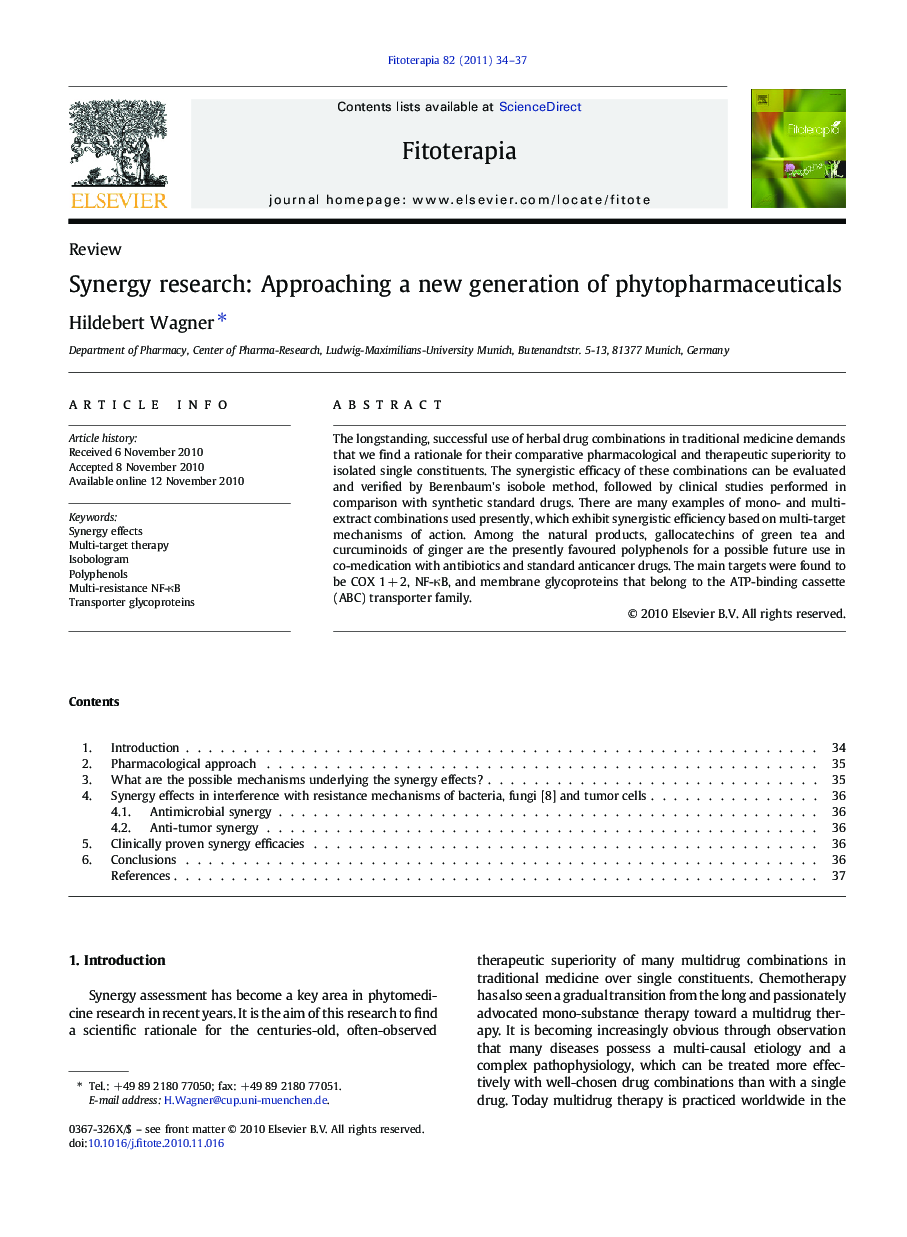| Article ID | Journal | Published Year | Pages | File Type |
|---|---|---|---|---|
| 2539342 | Fitoterapia | 2011 | 4 Pages |
The longstanding, successful use of herbal drug combinations in traditional medicine demands that we find a rationale for their comparative pharmacological and therapeutic superiority to isolated single constituents. The synergistic efficacy of these combinations can be evaluated and verified by Berenbaum's isobole method, followed by clinical studies performed in comparison with synthetic standard drugs. There are many examples of mono- and multi-extract combinations used presently, which exhibit synergistic efficiency based on multi-target mechanisms of action. Among the natural products, gallocatechins of green tea and curcuminoids of ginger are the presently favoured polyphenols for a possible future use in co-medication with antibiotics and standard anticancer drugs. The main targets were found to be COX 1 + 2, NF-κB, and membrane glycoproteins that belong to the ATP-binding cassette (ABC) transporter family.
Graphical AbstractBoth in vitro and in vivo evidence support that botanical synergy enhances the therapeutic potential of botanicals as drugs, alone or in co-medication with synthetic therapeutics.Figure optionsDownload full-size imageDownload as PowerPoint slide
